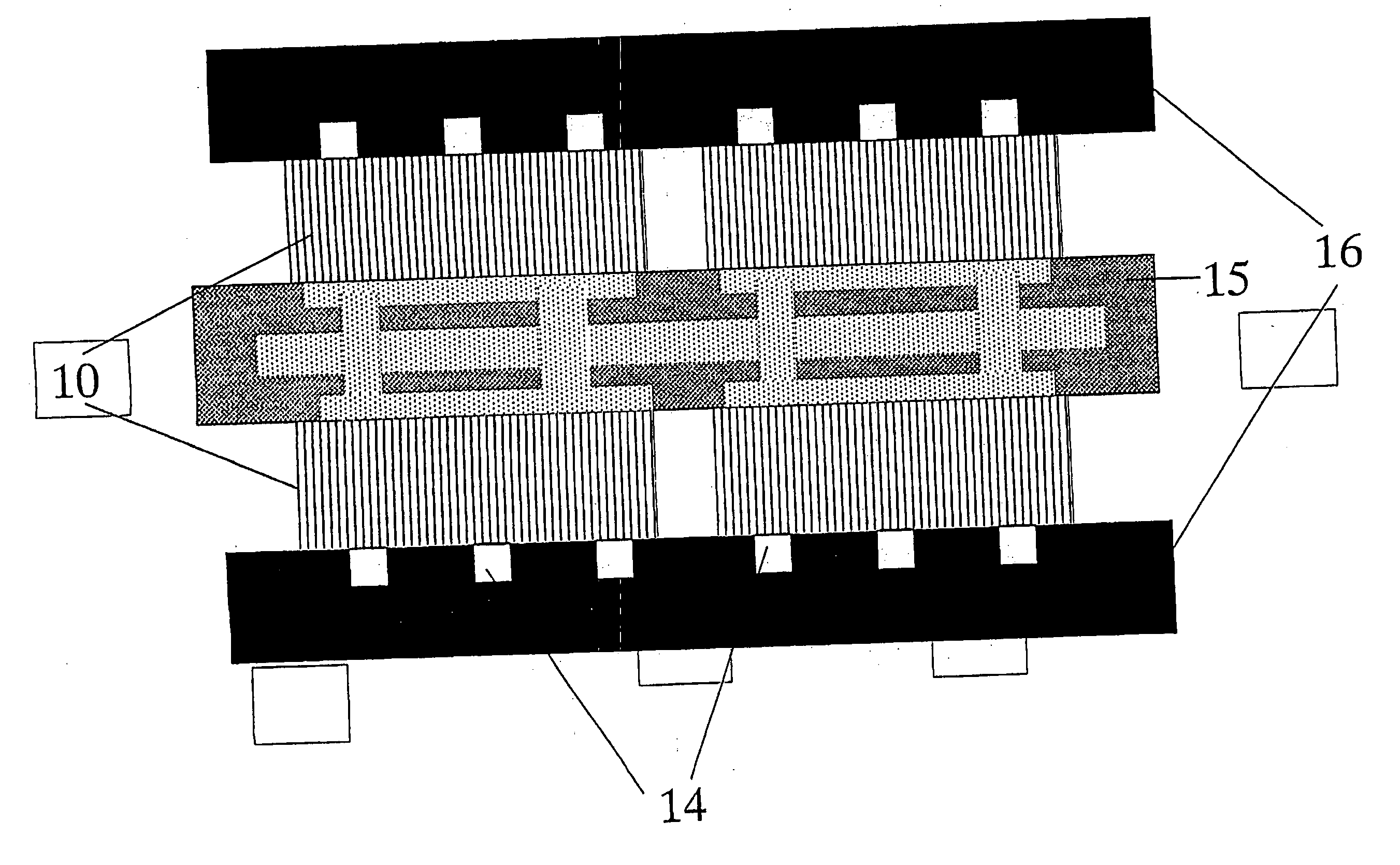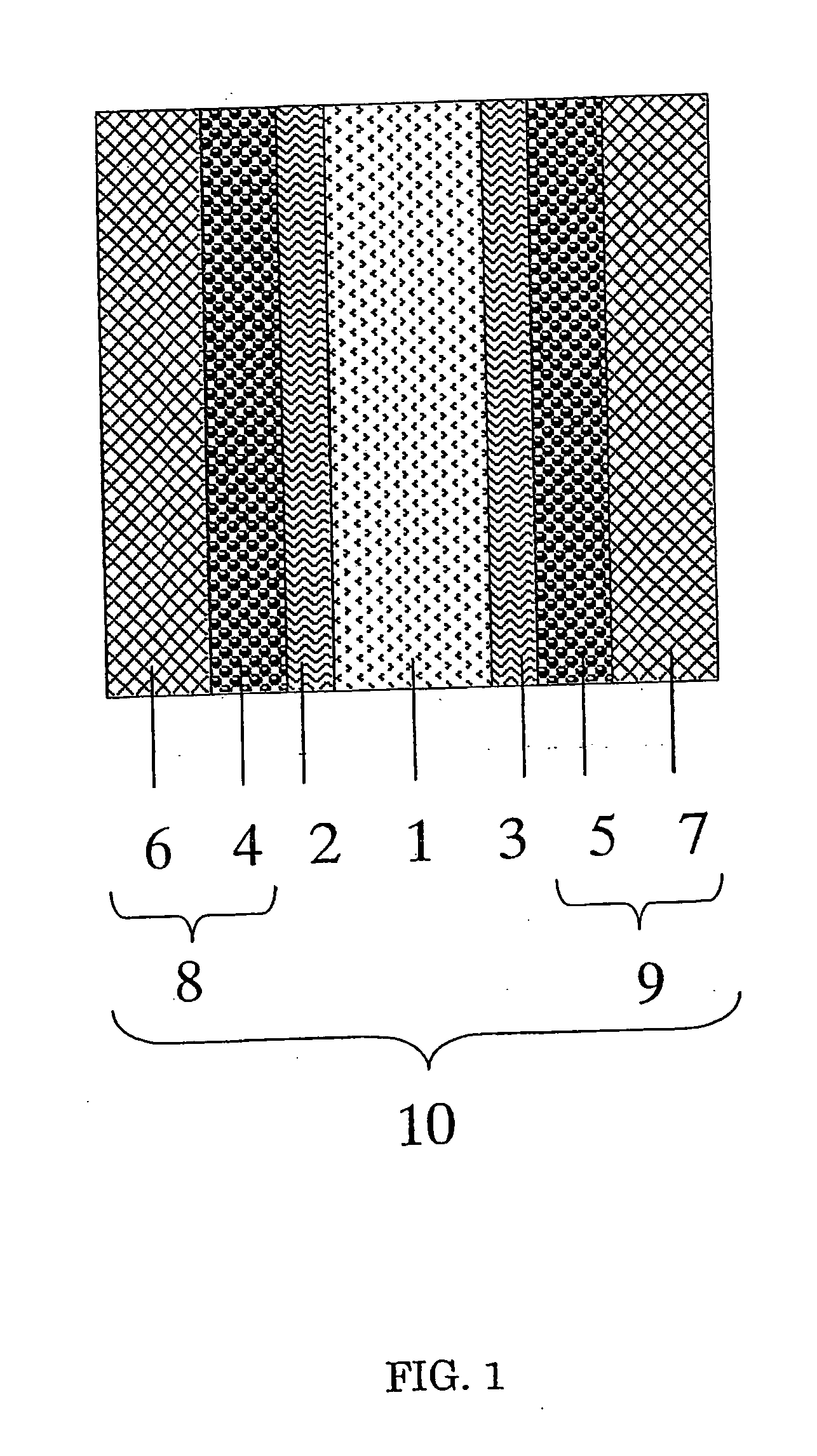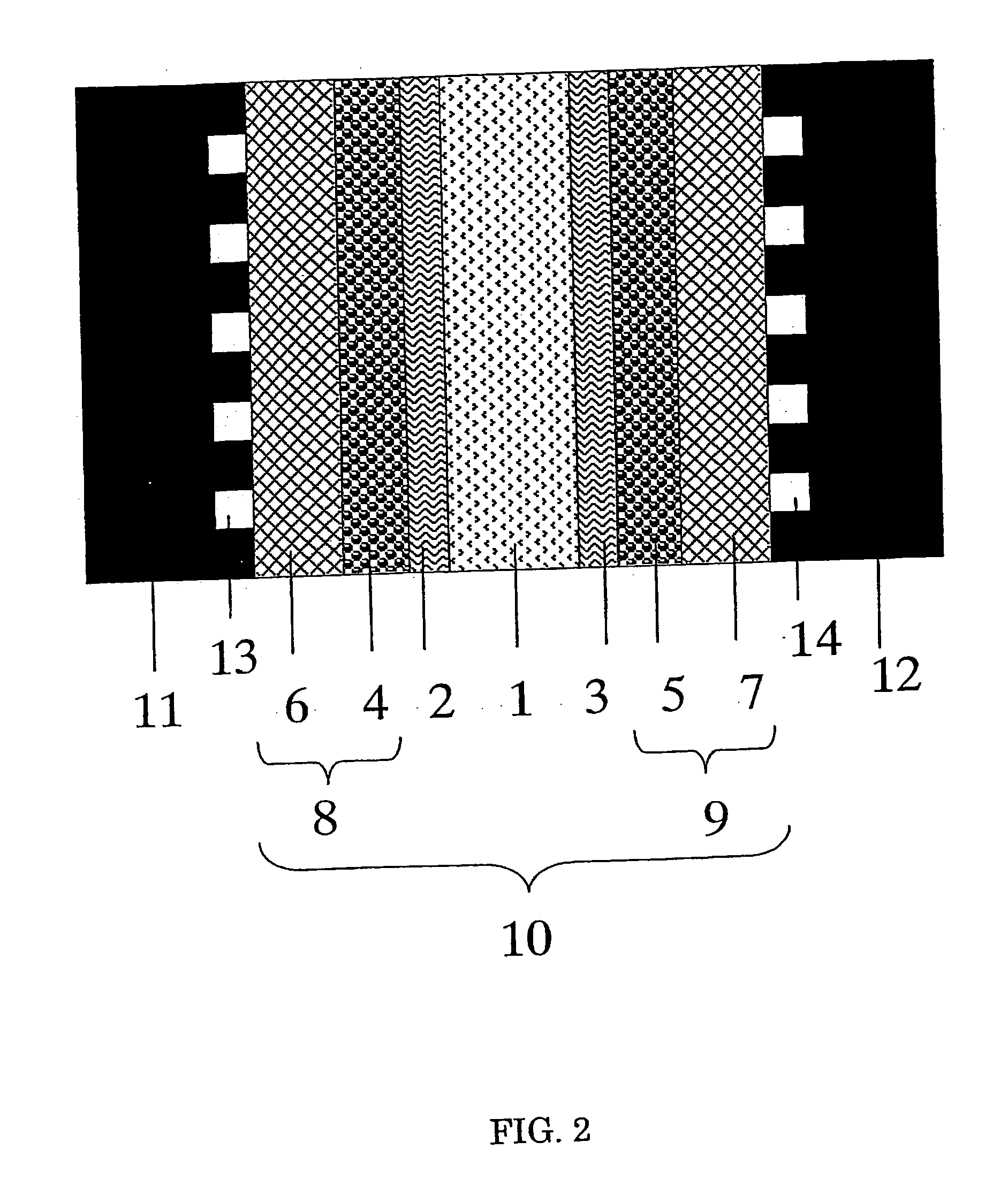Proton conducting polymer film and method for production thereof
a technology of conducting polymer and polymer film, which is applied in the direction of non-metal conductors, cell components, sustainable manufacturing/processing, etc., can solve the problems of poor stability of cation-exchange membranes, difficult manufacturing, and inability to manufacture fuel cells with a sufficient life using this membran
- Summary
- Abstract
- Description
- Claims
- Application Information
AI Technical Summary
Benefits of technology
Problems solved by technology
Method used
Image
Examples
example 1
[0122] Polyphenylene sulfide was used as a hydrocarbon polymer.
[0123] To a glass vessel, 729 g of 1-chlorobutane and 3.65 g of chlorosulfonic acid were weighed to prepare a chlorosulfonic acid solution. A polyphenylene sulfide film (trade name: Torelina, thickness: 50 μm, available from Toray Industries, Inc.) was weighed in an amount of 1.69 g, immersed in the chlorosulfonic acid solution and left standing at room temperature for 20 hours (chlorosulfonic acid was added in an amount of 2 equivalents relative to the aromatic unit of the polyphenylene sulfide). After left standing at room temperature for 20 hours, the polyphenylene sulfide film was recovered and washed with ion-exchanged water until it is neutralized.
[0124] A polyphenylene sulfide film after washing was left standing under a controlled relative humidity of 98%, 80%, 60% or 50% for 30 minutes in a thermo-hygrostat at 23° C. to dry the film, obtaining a polyphenylene sulfide membrane in which a sulfonic acid group is ...
example 2
[0127] This example was performed in the same manner as in Example 1 except that 721 g of 1-chlorobutane, 5.40 g of chlorosulfonic acid and 1.67 g of the polyphenylene sulfide film were used (chlorosulfonic acid was added in an amount of 3 equivalents relative to the aromatic unit of the polyphenylene sulfide). It was observed that the resulting sulfonated polyphenylene sulfide membrane (80 mm×80 mm, thickness: 53 μm) maintained the shape of a membrane.
[0128] The results of the evaluation of the properties of this membrane are shown in Tables 1 to 3 and in FIG. 5.
example 3
[0129] This example was performed in the same manner as in Example 1 except that 716 g of 1-chlorobutane, 7.16 g of chlorosulfonic acid and 1.66 g of the polyphenylene sulfide film were used (chlorosulfonic acid was added in an amount of 4 equivalents relative to the aromatic unit of the polyphenylene sulfide). It was observed that the resulting sulfonated polyphenylene sulfide membrane (80 mm×80 mm, thickness: 54 μm) maintained the shape of a membrane.
[0130] The results of the evaluation of the properties of this membrane are shown in Tables 1, 2 and 5 and in FIG. 6.
PUM
| Property | Measurement | Unit |
|---|---|---|
| elongation at break | aaaaa | aaaaa |
| proton conductivity | aaaaa | aaaaa |
| proton conductivity | aaaaa | aaaaa |
Abstract
Description
Claims
Application Information
 Login to View More
Login to View More - R&D
- Intellectual Property
- Life Sciences
- Materials
- Tech Scout
- Unparalleled Data Quality
- Higher Quality Content
- 60% Fewer Hallucinations
Browse by: Latest US Patents, China's latest patents, Technical Efficacy Thesaurus, Application Domain, Technology Topic, Popular Technical Reports.
© 2025 PatSnap. All rights reserved.Legal|Privacy policy|Modern Slavery Act Transparency Statement|Sitemap|About US| Contact US: help@patsnap.com



